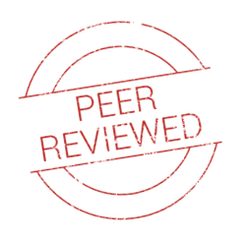KEYWORDS
Supply chain
Agrifood
Nutrition
Digitalisation
Abstract
Personalised nutrition plans are continuing to grow as increasingly health-conscious but time-poor consumers look for ways to incorporate better nutrition into their busy lifestyles. This growth means that previously niche ingredients and products are finding their way into the mainstream as nutritional products continue to grow and diversify. To meet demand, businesses must expand their supply chains to cover every corner of the globe – and this piece aims to outline how to overcome the challenges involved in accomplishing this.
Today’s consumers are more conscious than ever about what they put into their bodies. 74% of global consumers are more likely to pay attention to nutritional benefits when purchasing food and beverages(1), while 65% say they plan to improve their heart health. And, in Europe, almost 9 in 10 consumers have used food supplements at some point in their lives – 93% of whom have taken supplements in the last year, while 65% say they plan to improve their heart health (2).
It's no surprise to see many of these consumers turning to personalised nutrition as they look to prioritise their own health. This is reflected by the explosive growth that personalised nutrition is experiencing, with some forecasts projecting the segment will be worth over $60bn USD worldwide by 2034 (3).
However, these consumers are aware of more than just their own health – they’re aware of the health of the planet, too. Modern conscious consumers I would take out and care about ethical considerations (4), and they want to know that their purchases do not support exploitative or unsustainable practices at any stage of their production
For supplements, nutritional products, and functional foods with more complex recipes – such as snacks and multi-vitamins – or for products containing more niche ingredients, being transparent about every ingredient is difficult without complete oversight of the whole supply chain. As this trend continues to develop, maintaining that level of oversight brings with it significant challenges, particularly in today’s hectic and often unpredictable market – but it also brings opportunities for those businesses that are ready to take them.
Technology provides new opportunities in precision nutrition
The exciting growth in the personalised nutrition segment means that the rewards for capitalising on these opportunities are great. And the conditions for demand to keep rising are perfect.
Firstly, populations in many key markets are aging, meaning there is a need for a wider range of life-stage-specific solutions. For example, older consumers may look for products that can offer specific benefits like better digestion, bone density, improved cognitive health, or improved cardiovascular health (5). In addition, younger consumers are more likely to focus on mental wellness and beauty-enhancing products (6) in more convenient formats that they can more easily incorporate into their busy schedules.
Secondly, the proliferation of wearable technology and the Internet of Things (IoT) mean that consumers of all demographics have access to all the data-driven insights they could ever want at their fingertips (7). In a world where we can view in-depth health information simply by glancing at a smartwatch, it’s unsurprising that more consumers than ever are better informed about their nutrition. This kind of precision has opened the door to more advanced techniques such as microbiome testing (8), which may well become the norm for many consumers in the future.
Advancing technology makes this kind of precision nutrition much more viable, supporting everything from product design to eCommerce. In time, the evolution of AI will unlock more exciting possibilities for hyper-specific product formulations as machine learning algorithms analyse genetic profiles, gut microbiota, and lifestyle data to create dynamic nutrition plans. It’s also possible to employ AI to predict demand for micronutrient-optimised ingredients using platforms like our Supply Chain Manager, helping formulators to stay agile in a rapidly evolving market.

An unpredictable world
As personalised nutrition continues to grow, supply chains will have to diversify to meet this demand, connecting manufacturers with a wider range of innovative ingredients. However, in the current geopolitical climate, fraught with conflict, trade tariffs, rising costs, and ever-more complex regulations in many markets around the world, this presents its own challenges.
The war in Ukraine continues to rumble on, bringing further disruption in Europe, while war in the Middle East is also impacting some of the world’s key shipping routes.
Perhaps the most significant area of concern for the global supply chain in 2025 and beyond is the nature of the relationship between the US and the rest of the world. Tensions between the US and China – the world’s two biggest economies look set to continue as sanctions, countermeasures, and a continuing dispute over Taiwan cloud the future. The decision of the US to impose increased tariffs – and the instant Chinese response – could be a preview of what lies in store for the rest of the world.
At the time of writing, the situation is so fluid that the 24-hour news cycle can barely keep up. By the time you read this, the will-they-won’t-they trade war between the US, the rest of the Americas, and Europe may be in full swing – or it may have evaporated into distant memory. The only thing that is certain about this story is that nothing is certain. (The only certainty about the tariff war is its uncertainty.)
It means companies should prepare for best-case and worst-case scenarios, as well as everything in between. As businesses look to expand their supply chains to incorporate new ingredients, it only makes it more likely that one of these new routes will face disruption. This can’t be prevented, but by embracing digitalisation wholesale, manufacturers can add flexibility, agility, and resilience to their operations, helping them cope with supply chains that could be disrupted - or even cut off - at short notice.
Diverging environmental standards
Of course, the needs of any single nation, economy, or market, are far outweighed by the needs of our planet. As the climate crisis continues to grow, every business must take into full consideration the impact of its action on the environment.
This will become increasingly important in 2025, as legislators begin to enforce tighter environmental controls across a wide range of industries. The EU is leading the way on legislative reform, after 2024 saw it begin to enforce its Corporate Sustainability Due Diligence Directive (CSDDD) (9), which directs large companies to identify and address potential ethical concerns at every level of their supply chains. Meanwhile, its proposed Packaging and Packaging Waste Regulations (PPWR) reforms look to enforce a curb in packaging waste, which could impact sensitive personal nutrition products such as powders.
An interesting note on these points is that this is another area where the US seems to be diverging from the rest of the world. As many markets impose stricter restrictions out of environmental concerns, the US is loosening them (10). This could have significant ramifications when examining supply chain routes, although the sheer unpredictability of American policymaking means that agile, digitally driven diversification is again the wisest strategy.
A distributor that uses cutting-edge digital tools to take a 360-degree, holistic view of all aspects of a product’s life cycle can effectively review supply chains for new efficiencies and potential bottlenecks. This can be useful when considering alternative ingredients to build resilience. At ACI Group, we may source a type of collagen that is produced using more traditionally sustainable methods. However, if this delivers an unsatisfactory end-user experience or results in products degrading prematurely, the waste this creates will have a net negative effect on its carbon footprint when compared to an existing solution.
Unlocking new adaptability with digitalisation
At its core, the personalised nutrition industry relies on control. It puts consumers in control of the nutrients they put into their bodies, so manufacturers need to develop and source products with the same level of precision. At a time when so many external factors seem to be out of their control, from ingredient prices to political unpredictability, businesses looking to take advantage of the personalised nutrition trend must exert more control over whatever they can. Expansive digitalised supply chains present one opportunity for businesses to do this.
Tools like Supply Chain Manager can unlock new opportunities in dual sourcing, enabling operations to continue smoothly should one supply route experience disruption. It can utilise AI to forecast demand while adapting to market conditions such as Forex volatility, environmental conditions, and supply shortages. AI never stops learning, which means the level of control customers have over their supply chains never stops growing. Some people (TraceGains) balk at the word ‘learning’ in AI terminology and prefer the word ‘build’.
As we continue through 2025 and beyond, companies offering personalised nutrition need certainty wherever they can find it.
However, by taking a new bold and innovative approach to the way they think about supply chain management, they can pre-empt many problems before they occur, and adapt quickly to issues that can’t be predicted. This renewed flexibility will give companies the resilience they need to not only survive the many challenges the future will bring – but invariably thrive, providing new opportunities for innovation in an exciting industry.
References and notes
- https://fmcggurus.com/reports/usa-covid-19-survey-july-2020/
- https://www.lebensmittelverband.de/en/news/20220801-european-consumers-use-food-supplements-safely-and-responsibly
- https://www.precedenceresearch.com/personalized-nutrition-market
- https://www.forbes.com/sites/stevebanker/2021/10/05/do-consumers-care-about-ethical-sourcing/
- https://www.supplysidesj.com/healthy-aging/searching-for-the-fountain-of-youth-in-a-baby-boomer-world
- https://www.nutritionaloutlook.com/view/the-pandemic-brought-new-consumers-to-the-supplements-market-how-can-companies-keep-this-new-audience-engaged
- https://nmc-magazine.com/the-future-of-personalized-nutrition-trends-shaping-2025/
- https://www.nutraingredients.com/Article/2023/09/13/research-suggests-microbiome-and-genetic-testing-could-revolutionise-personalised-nutrition/
- https://commission.europa.eu/business-economy-euro/doing-business-eu/sustainability-due-diligence-responsible-business/corporate-sustainability-due-diligence_en
- https://www.forbes.com/sites/maryroeloffs/2024/12/10/trump-says-companies-investing-1-billion-in-us-will-soar-through-environmental-regulations/



